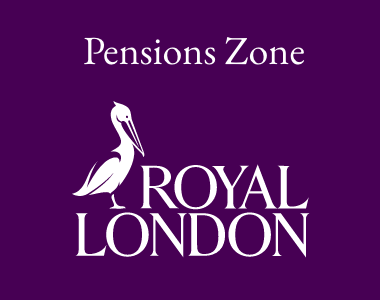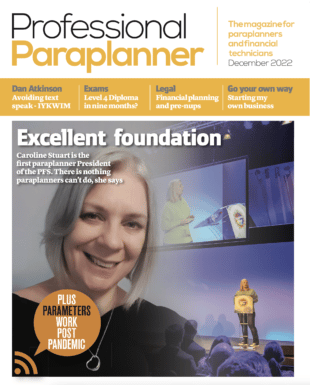Holly Johnson, training lead, The Art of Finance, flags up some of the common pitfalls when paraplanning and provides some practical tips to avoid them.
Para- (prefix): A prefix with many meanings, including: alongside of, beside.
Para-planner = alongside of planner
Have you ever been in a social situation and been asked what you do? Have you felt the dread of trying to explain what a paraplanner is and simply replied with “I work in finance… what do you do?” You are not alone!
The paraplanning role is mainly unknown in the wider world, but within the industry it has evolved into an integral part of the advice process. These days, paraplanning is a respected profession, with some people wanting to start their careers in paraplanning to eventually move into an advice role, but more and more people are seeing paraplanning as a long-term career.
As the role is now so vital in the provision of good advice, we have set out some of the common pitfalls we’ve seen paraplanners experience during the course of their careers.
Stepping stones
Whilst many paraplanners do come into the role to eventually become advisers, a common misconception is that the role is simply there as a stepping stone. It’s okay to want to be a paraplanner. In fact, it’s more than okay, it’s brilliant! Paraplanners provide a great deal of technical analysis within the advice process and often challenge advisers to look at other angles. It’s essential that paraplanning is seen as a credible long-term career. Lots of paraplanners feel pressured to move into an advice role to advance in their careers, and some do make the move only to regret it and move back into paraplanning. My advice… think about what your skills are, what you enjoy most and only make the move to becoming an adviser if that is your ambition.
Tunnel vision
We’ve all been there – work piled high, cases waiting to be written, service standards to adhere to, and before we know it, tunnel vision has struck. It’s important to try to take a step back and consider the advice before starting a case. Don’t just write it with tunnel vision, not considering the advice and simply getting the letter written. Take a moment to read through the case before writing the report and write down what advice you would give. Does it match what the adviser has requested? Great! If not, have a discussion with the adviser, give your input – never be afraid to challenge – some of the best advice given is through collaboration between adviser and paraplanner.
Going ‘off piste’
Templates are there for guidance and to ensure that we include all the compliance ‘stuff’ that the FCA want to see, but actually, it’s okay to go off piste sometimes. The main areas where it’s good to do this is for clients’ objectives and the reasons why the advice given is suitable. All too often I’ve seen suitability reports that are carbon copies of each other, where paraplanners have just used example paragraphs from templates rather than really digging down into the client’s own circumstances. The FCA love to see clients’ own words and using quotations from meeting notes is a great way of capturing this. *Disclaimer – do NOT go off piste on the sections that must be included for FCA purposes, otherwise your Compliance department will hunt me down!
Keep it simple
I know you’re probably laughing reading this subheading, because financial advice is anything but simple. What I mean is explain things in plain English. Always write a suitability report as though you’re explaining it to your Nan (other relatives are available). The main purpose of a suitability letter is to document the advice in an easily digestible way so that, essentially, the client understands what they are agreeing to.
My attention span is…
Sometimes there is a LOT of information for a client to read, especially if holistic advice is being given. My top tip for ensuring clients get all the important information before they lose interest, is to put all of that at the beginning and shift the rest of it to appendices at the end of the report. Another good way of capturing the important stuff is to summarise the advice at the beginning of the report. Use tables, bullet points, icons, colour, different layouts – anything to capture the client’s attention and keep them engaged.
Record it
It’s so simple, but is often forgotten. Anything you look at on a case, any conversation you have with a provider, any information you receive, any calculation you do… you’ve got it… record it! This helps ensure the logic and process is always clear for anyone to look back on at any given time.
Formatting
The bane of every Paraplanner’s life amiright?! I recently shared some top tips for report writing HERE but there is a lot of free content online, so swot up on how best to format your reports to make them look impressive.
Spell chick
We’ve all been there, writing an article for Professional Paraplanner, making a spelling mistake that doesn’t come up with one of those squiggly lines because it is an actual word, then sending out that article without spotting it. Always use a spell-checking tool and always proof read. If time allows, it’s good to look with a fresh pair of eyes, so perhaps after lunch or first thing in the morning. You might benefit from printing the report out (do consider the environment though) or check out read mode on Word where you can get it read out to you by a robot (headphones may be required). Bonus if you can ask a colleague to proof-read for you… like I should have!
[We welcome articles from paraplanners for the magazine and the website – so if the muse takes you, please get in touch – Rob]































